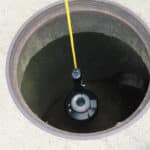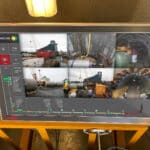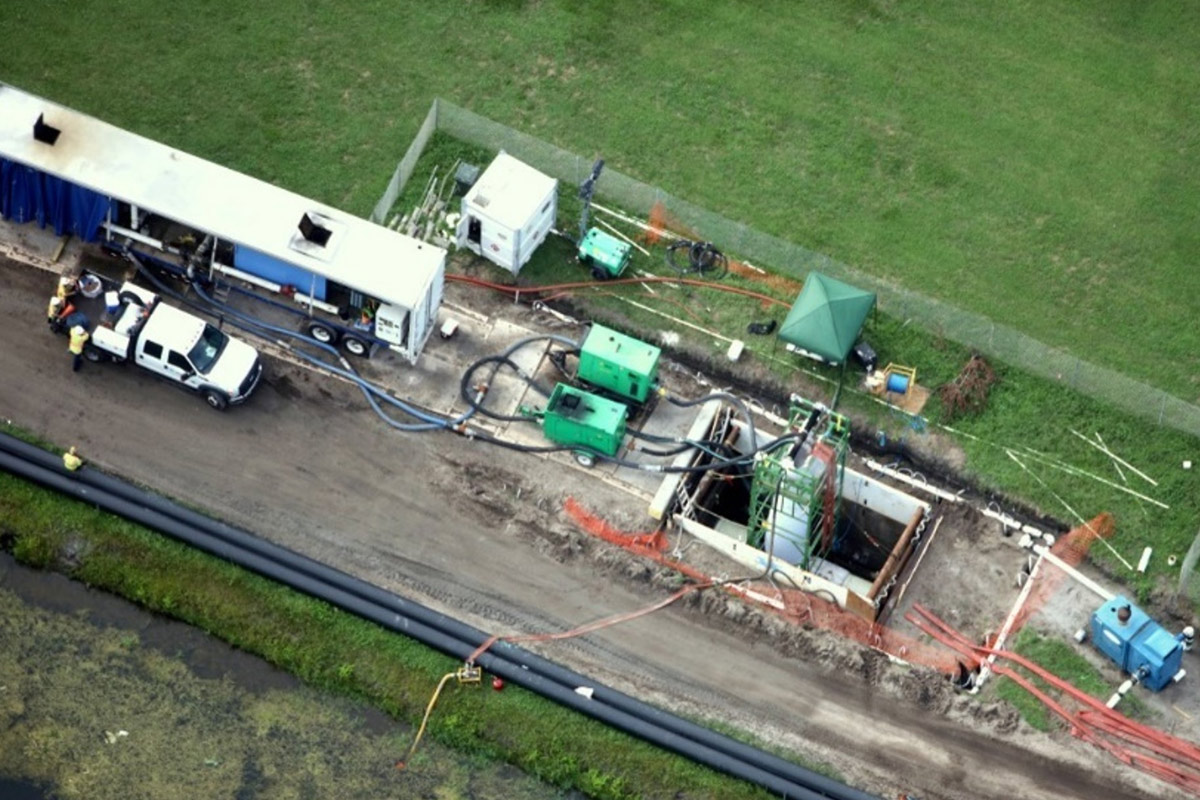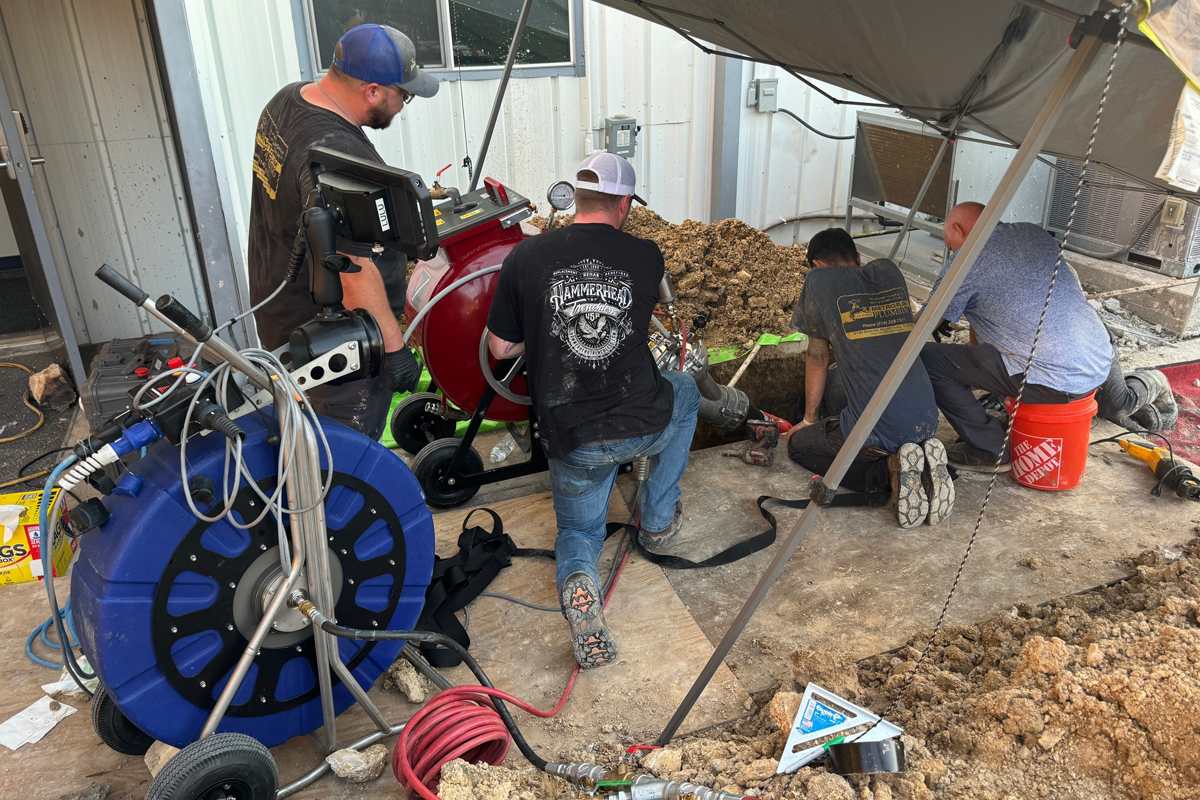
PW Trenchless Upsizes Chilliwack’s Sewers with Pipe Bursting
A recently completed pipe bursting in Chilliwack, British Columbia, stands as a strong example of how trenchless technologies, delivered by an experienced and competent project team, can deliver tremendous value through technical excellence.
Chilliwack is a scenic, affordable rural community roughly 100 km east of Vancouver with a population of about 107,000. It includes several first nations communities within the City boundaries. It was incorporated in 1873 and is the third oldest municipality in British Columbia.
In the neighbourhood of Sardis, just east of Luckakuck Creek, an impressive upsizing of a 300-mm internal diameter PVC sanitary sewer to 500-mm external diameter HDPE was completed. This was achieved using pipe bursting techniques. Normally pipe bursting will increase a pipe by one or two sizes. This project gave the City some serious upsizing bang for its buck.
Strategic Planning
In 2021, city leaders retained Urban Systems to prepare a Sanitary Strategic Plan. Urban Systems metered manholes in the area to better understand capacity issues. These studies revealed that while the existing sanitary system had no operational issues, it was under capacity for several reasons.
Water levels in this area can and do rise drastically. Hence, the risk of surcharge must be planned for and managed, especially in a growing community. This growth will increase the loading on the system. The existing pipes also collect sanitary from several upstream first nation groups. These groups will benefit as their communities also continue to grow.
While there were proposals to complete the work using traditional open-cut methods, trenchless technologies were preferred for several reasons.
Deciding on Trenchless
The large excavations needed to do this work using open-cut methods would have introduced a high risk of settlement to the nearby buildings. The closest being about 5 m away. There is a 750-mm concrete storm sewer parallel to, and about 1.5 m away from, the main that would have needed support if excavated.
By using trenchless methods there was far less impact on neighbouring buildings, and the nearby residents. Additionally, many trees at the upstream or east end of the project were saved. Settlement gages were installed to monitor settlement near the buildings.
While all the work was carried out on City property, there is an arrangement between the city and the Couqualeetza and Stó:lō first nations to use some of their land for laydown and access. The current access to the pedestrian pathway has been left unhindered.
The scope of this project was to upsize about 350 m of pipe through pipe bursting using three pulls. At the west extent of the project near the creek there was an open cut section of about 60 m. This section featured 600-mm PVC pipe to meet the existing 600-mm trunk sewer.
The work included upgrades to three existing manholes and installing three new manholes. PW Trenchless also installed an in-house designed bypass in two phases for the main line installation as part of the contract.
All of this in an environment with a high-water table, even for August, with deep excavations of up to 4 m. This made trenchless technologies a very attractive option.
The City retained the Wedler Engineering & Sandpiper Contracting design-build team for this upgrade. They in turn sole sourced the trenchless elements of the work to PW Trenchless.
Upsizing Commences
Without monitoring water levels, the normal assumption is that the lowest flows occur during late summer. That is when the work was carried out. The work started at the upstream or end of the project – the area that is furthest away from the Luckakuck Creek. In doing so the team had the best chance of encountering a lower water table as the project progressed.
The first exit pit is located at the top or the east end of the job. About 100 m west or downstream of the first manhole, a second double entry manhole was built to accommodate pulls in two directions. Pull 1 goes from the double entry manhole east to or upstream for 100 m to the first exit pit. Pull 2 goes from the double entry manhole about 120 m west or downstream to a double exit pit. The manhole in the double entry pit was also the existing collector for an adjacent building with about 50 units. Pull three was pulled from an existing manhole 90 m west or downstream. It was pulled east to the double exit pit.
The double exit pit located roughly halfway along the length of the project was the most challenging in terms of water management. There was a considerable volume of water running into the excavation. It carried a lot of sand and collapsed the sides of the excavation. This was expected and dealt with using good shoring techniques, an experienced crew, and an appropriately sized pump.
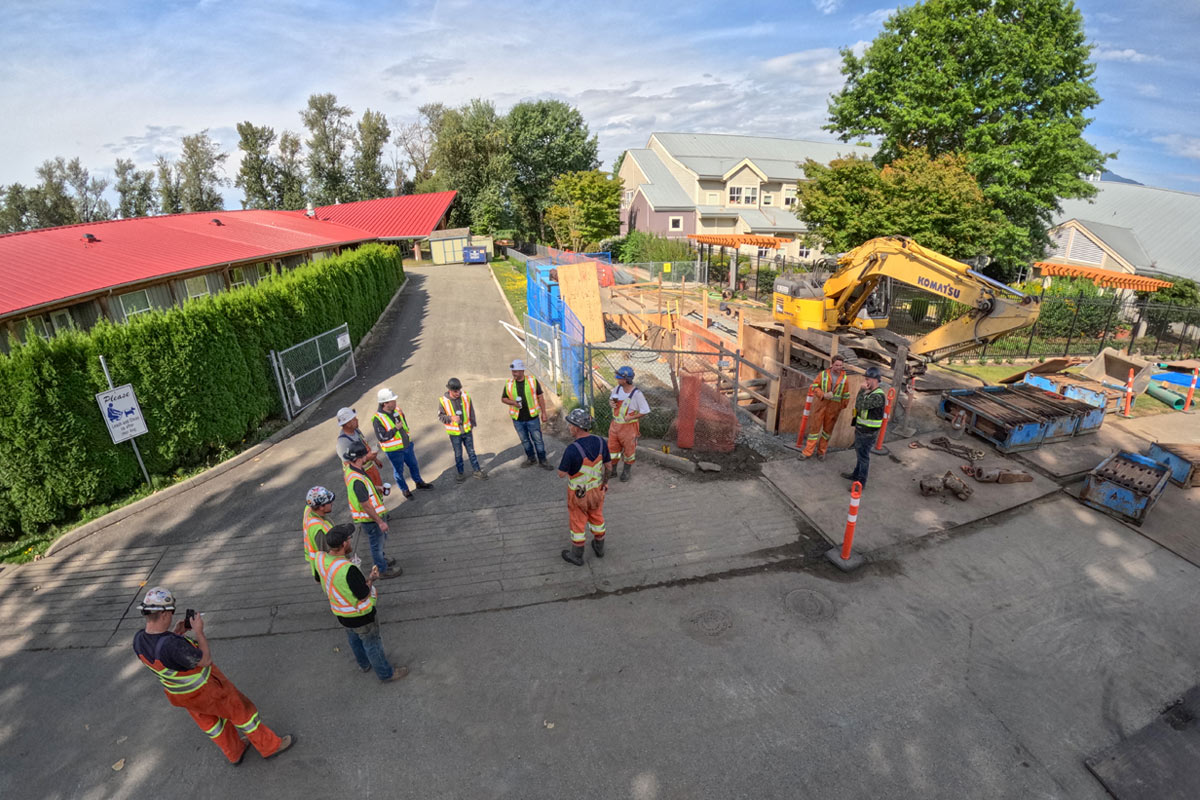
Once the last pull, from the existing manhole at the west end of the project (near the creek) was completed, the remaining alignment was open cut to the creek. During this phase an existing section of pipe in a back yard easement was eliminated when the sanitary was slightly realigned.
Project Outcome
The upsizing increased the cross-sectional area by approximately 180 per cent. However, it did not cause any observed heaving or displacement at the surface. The material being displaced during the pull simply compressed and densified around the new pipe.
The Grundburst 2400G is an impressive piece of equipment that can pull up to 260 tonnes. This is just a little more pulling power than a typical locomotive. It can pull pipe from 0.5 m to 1.2 m. One pulling rod alone weighs about 210 kg. The machine itself weighs about 4.1 tonnes and has a 4-cylinder diesel engine.
It is so big that the minimum required pit dimensions are 10.7 m x 3 m x 0.5 m below the pipeline. However, with the double entry and exit pits on this project the excavation dimensions were much longer. They were about 23 m long and up to 4 m deep.
The occupants of the nearby buildings were very appreciative of the careful work to preserve the integrity of their property.
The choice to utilize pipe bursting over traditional open cut excavation enabled the City and its partners to achieve a major increase in system capacity. This was achieved while minimizing disruption to nearby residents, protecting the nearby residential buildings, and preserving valuable green space.
Furthermore, the collaboration between the City of Chilliwack, Wedler Engineering, Sandpiper Contracting, and PW Trenchless demonstrates how careful planning, and skilled execution can overcome challenges. Innovative methods helped to address challenging conditions such as high-water tables and sensitive surroundings.
Tonia Jurbin, P. Eng. (retired) is a geotechnical engineer and freelance writer in Greater Vancouver
Latest Posts
- 92-in. Stormwater Pipeline CIPP Rehab in Englewood, Colorado
- The Human Edge in an AI World: Why Skilled HDD Crews Still Reign Supreme
- Geotechnical Considerations for HDD to Mitigate Risk
- Understanding Manhole Inspections and Their Role in Infrastructure Management
- Product Showcase – VMT Launches TunnelHub
Next Up
HDD Academy | February 19-20, 2026 | Scottsdale, Arizona | Learn more




